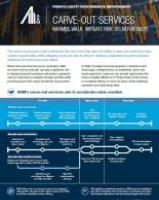The Pressures of Stressed Carve-Outs for Private Equity
The social and economic impact of COVID-19 has negatively impacted company performance across many sectors. Businesses are faced with addressing an unprecedented ‘triple whammy’ of simultaneous liquidity, operational and strategic shifts. With groups re-evaluating strategic priorities and seeking to release cash, we are seeing an increased number of carve-outs as stressed sellers look to dispose of assets.
Stressed sellers share many characteristics:
- they try to move fast through a deal process;
- they look to maximise value in the context of a shorter deal timeframe; and
- they invariably seek to provide a minimum viable level of support to buyers given their own business continuity pressures.
This mentality is simply a consequence of the situation in which the seller and its management team find themselves. If a seller is under stress, ensuring business continuity – difficult at the best of times amid M&A discussions – is even more challenging. Additionally, it costs money to close a deal and provide ongoing support. This expenditure can place additional pressure on sellers to speed up the process and commit a minimum of resource to the transaction.
In a carve-out situation, developing an optimal scope for the transitional service agreement (TSA) is a key milestone that can help or hinder all parties. TSAs dictate the coverage and level of service provided by the seller after the transaction closes, including accounting, transactional finance, human resources, technology or other areas.
Scoping TSAs at pace is common in stressed situations and can give rise to new issues. Failing to clarify the services that should be provided and its expected duration, as well defining how the parties need to work together to close down the TSAs, is a key stumbling block that can change the nature of a deal and impact the eventual success of the carve-out.
The stressed carve-out: gauging the right approach
Being able to quickly diagnose the right way to approach a carve-out, including understanding the degree of corporate stress on the seller, can have a material impact on the transaction’s success. A&M’s experience in restructuring and transformation has supported the development of a clear methodology in understanding the degree of stress on a given transaction. Our methodology informs the carve-out approach and reduces transaction risk to a buyer or a seller.
Seller stresses
Several signs of vendor stress can help determine the right approach to a carve-out, including public admissions of stress (e.g. profit warnings or redundancies), as identified in a recent transaction involving A&M where the listed seller was reported to be on the verge of entering Chapter 11. When not involving public companies, other telling signs are TSA service delivery falling below agreed quality thresholds; or suspension of business-as-usual activities. In these scenarios, A&M prioritises activities required to accelerate the separation process for sellers in three main areas:
- Accelerating or re-prioritising stand-up plans, including via interim roles
- Determining where low-cost vendor support can suffice
- Identifying alternative support models for key functions, including switching to manual or paper-based processes as a last resort
Buyer stresses
Regardless of sellers’ stresses, buyers will also face their own pressures as they separate and take control of operations, particularly if they believe seller management is more focused on tackling their in-house agenda and treating the carve-out as a secondary concern. As with sellers, A&M focuses on three core priorities when working with buyers:
- Finding and implementing alternative solutions to vendor TSA support
- Accelerating or adjusting the planned TSA exit timetable
- Identifying alternative vendor support options
Carve-outs often require subsequent business transformations, such as a forced ERP implementation or re-modelling of business processes. In a recent case, A&M supported a buyer under pressure from a stressed vendor, rapidly identifying areas to re-prioritise and defer planned improvements. This included delaying the ERP implementation for new supplier management processes, thereby accelerating the ERP go-live with a reduced scope.
Focus on the operating environment
As well as pressures on sellers and buyers, attention should be paid to the broader climate in which the transaction is taking place. Are there significant sector-specific pressures affecting one or more parties? Have governments mandated regulatory changes or imposed restrictions due to force majeure factors that make operations less efficient or more challenging?
Buyers and sellers need agile due diligence partners that add strategic value right through a carve-out process. In transactions with stressed vendors, A&M knows the key risks sellers and buyers face, and we know what to look for in order to diagnose the right approach. Planning for complications early in the process and rapidly identifying an alternative transaction or carve-out approach can have a markedly positive impact for both buyer and seller, enabling both parties to get the transaction done while managing cost and risk.
A&M’s experience in stressed carve-outs is part of a full-service advisory offering from a team that deals with carve-out issues like these and much more besides.
A&M: Leadership. Action. Results.
A&M has worked with private equity firms in Europe and globally to stabilise financial performance, transform operations, catapult growth and accelerate results through decisive action.
Our professionals have extensive experience supporting sellers and buyers through carve-outs and divestments, helping guide businesses through tough, complex situations. To learn more about our expertise and to understand the full scope of our Private Equity Performance Improvement work, contact our team here.



